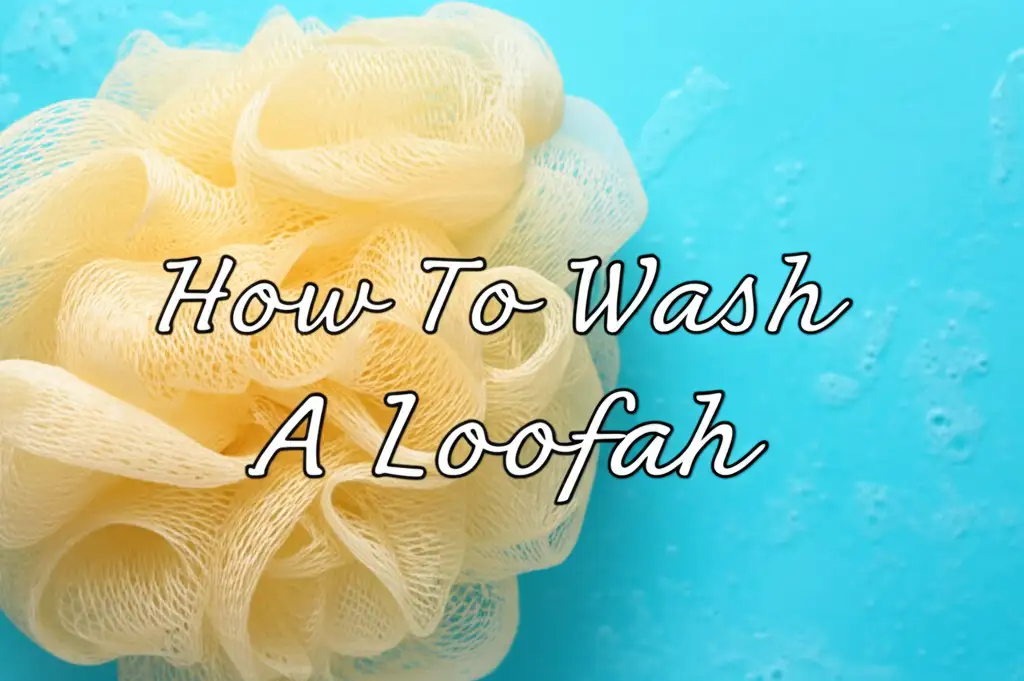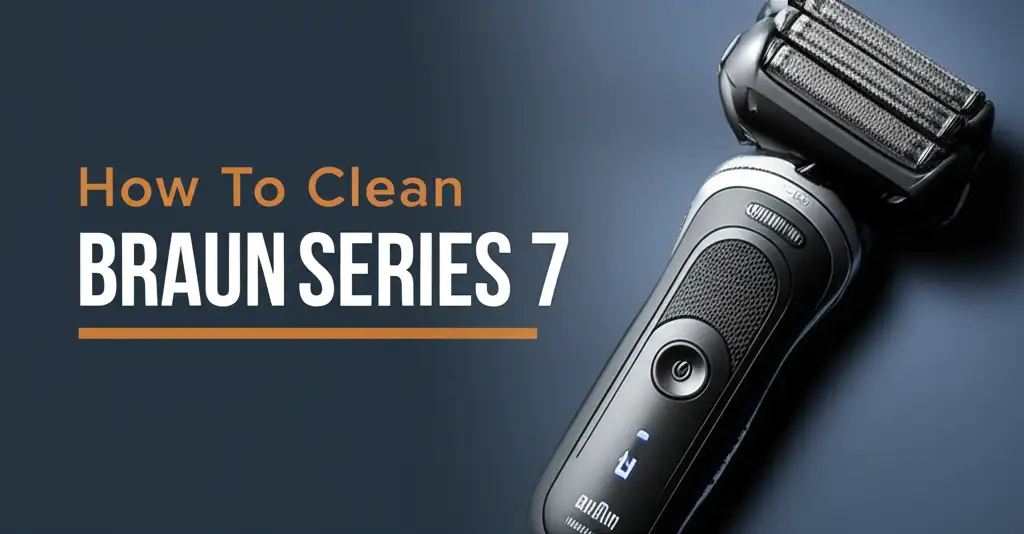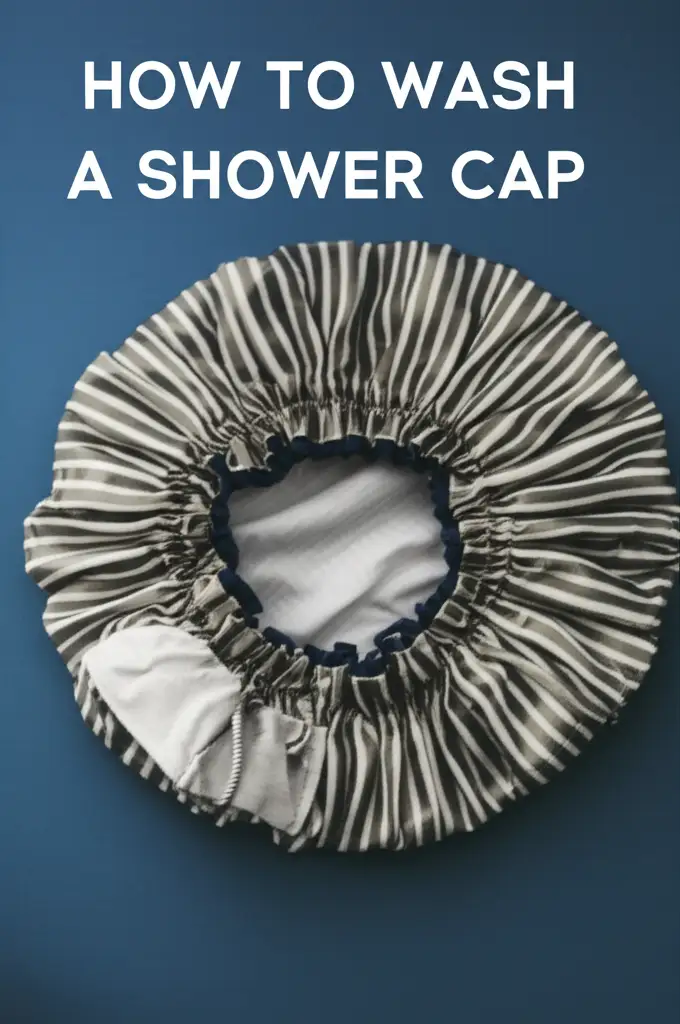· Personal Hygiene · 19 min read
How To Wash A Loofah

Keep Your Loofah Clean: How to Wash a Loofah Effectively
Have you ever thought about how clean your loofah truly is? Many people use a loofah daily, expecting it to clean their skin. Yet, the loofah itself can become a breeding ground for germs. Its design makes it perfect for trapping dead skin cells and soap residue. This combination creates a damp, warm environment that germs love. Learning how to wash a loofah correctly is important. It keeps your bathing tool hygienic and extends its useful life. This guide will walk you through easy steps to clean both natural and synthetic loofahs. We cover daily care, deep cleaning methods, and signs it is time for a new one.
Takeaway:
- Wash your loofah regularly to prevent bacteria and mold growth.
- Always rinse and dry your loofah thoroughly after each use.
- Deep clean natural loofahs with boiling water, bleach, or vinegar.
- Machine wash or hand wash synthetic loofahs with hot water.
- Replace loofahs every 3-4 weeks for natural ones, or 2 months for synthetic ones.
Washing a loofah involves rinsing thoroughly after each use and deep cleaning regularly. Natural loofahs benefit from bleach or vinegar soaks and boiling. Synthetic loofahs can go in the washing machine or be hand-washed with soap. Proper drying after every wash is essential for both types.
Is Your Loofah a Hidden Germ Magnet? Why Cleaning Matters
Your loofah feels great on your skin, right? It exfoliates and creates rich lather. Yet, this very tool, meant for cleaning, can harbor unwanted guests. Every time you use it, dead skin cells and soap particles get caught in its fibers. The bathroom is often humid and warm. This creates a perfect environment for bacteria and mold to grow. I find this idea quite surprising for something that cleans me.
Dirty loofahs can spread germs back onto your skin. This may lead to skin irritation, infections, or even acne breakouts. Cleaning your loofah regularly helps prevent these problems. It also keeps your loofah smelling fresh and performing well. A clean loofah makes your shower routine more hygienic. It supports healthy skin.
The Science Behind Loofah Grime
Loofahs have a porous structure. This design helps them exfoliate skin effectively. However, it also makes them excellent traps. Bits of skin, soap scum, and moisture get stuck deep inside. Warm, moist conditions are ideal for many types of microorganisms. These include bacteria, mold, and yeast. They can multiply rapidly on your loofah.
These germs can cause problems if they get onto open cuts or sensitive skin. Even tiny abrasions from shaving can become entry points for infection. Regular cleaning breaks this cycle. It reduces the number of microbes on your loofah. This makes your shower safer and more sanitary for your body.
Natural vs. Synthetic Loofah: Understanding Your Cleaning Needs
Not all loofahs are the same. Knowing the difference helps you clean them properly. Natural loofahs come from the loofah plant. They are fibrous and biodegradable. Synthetic loofahs are usually made from mesh nylon or plastic. They are often colorful and fluffy. Each type needs a specific cleaning method.
Natural loofahs are more porous. This means they can trap more dead skin and bacteria. They also break down over time. This makes them more prone to mold if not dried well. Synthetic loofahs are less porous. They might be easier to clean. They also last longer than natural ones. Understanding your loofah type is the first step in effective cleaning.
Caring for Natural Loofahs
Natural loofahs are eco-friendly options. They offer good exfoliation. However, their plant-based fibers hold moisture longer. This makes them prone to bacterial growth if not managed well. Proper care extends their life. It also keeps them safe for use. You will need to treat natural loofahs more carefully than synthetic ones. Their structure is delicate.
Natural loofahs require specific deep cleaning methods. These methods target the bacteria that thrive in organic materials. Boiling, bleach solutions, or vinegar soaks are common choices. These powerful cleaners help disinfect the natural fibers. Proper rinsing after these treatments is vital. This ensures no harsh chemicals remain.
Caring for Synthetic Loofahs
Synthetic loofahs are common in many bathrooms. They are durable and often inexpensive. Their mesh design does not trap as much organic matter as natural loofahs. This makes them a bit easier to clean. They also dry faster. Synthetic loofahs can often withstand machine washing. This makes cleaning simple and quick.
You can often toss synthetic loofahs in with your laundry. Just be sure to use a mesh laundry bag. This protects them from damage. Hot water and detergent will clean them effectively. For hand washing, a simple soap and water scrub works well. Synthetic loofahs generally last longer with proper care. They are a convenient choice for many.
Daily Rituals: Quick Steps to Keep Your Loofah Clean
Daily care is vital for any loofah. It prevents grime from building up. Simple habits after each use can make a big difference. I always make sure to do these steps. These small actions dramatically reduce germ growth. They help keep your loofah fresh between deep cleans.
First, rinse your loofah thoroughly. Hold it under running water after every shower. Squeeze out all remaining soap and suds. Second, shake out excess water. Third, hang your loofah to dry. Do not leave it in the shower or on a damp surface. Good airflow helps it dry completely.
The Power of Rinsing and Squeezing
Rinsing your loofah immediately after use is crucial. It washes away dead skin cells and soap residue. These are the main food sources for bacteria. Use warm, clean water for this step. Squeeze the loofah firmly to force water through all its layers. Repeat this several times until the water runs clear.
Some people might not squeeze enough. This leaves soap inside the loofah. Soap residue makes the loofah stiff. It also provides food for microbes. Effective squeezing ensures water reaches all parts. This flushes out hidden debris.
Drying It Right: Airflow is Key
Proper drying is perhaps the most important daily step. Loofahs need to dry completely between uses. Damp environments are perfect for mold and bacteria. Hanging your loofah outside the shower stall is best. Choose a spot with good air circulation. A hook on the back of the bathroom door or near an open window works well.
Avoid leaving your loofah inside the shower. The shower stall stays humid long after you finish. This prevents proper drying. If your bathroom lacks good ventilation, consider drying your loofah in another room. For delicate items that need careful drying, you might consider how some people wash a bra and then air dry it. Ensuring your loofah is dry prevents mildew. This simple step keeps your loofah hygienic.
Deep Cleaning Loofahs: Methods for Natural Sponges
Deep cleaning is necessary for natural loofahs. Daily rinsing is not enough. You need to disinfect them regularly. This removes stubborn bacteria and prevents unpleasant odors. I deep clean my natural loofah once a week. There are a few effective methods you can use. Each method uses common household items.
These methods aim to kill bacteria and mold. They penetrate deep into the loofah’s fibers. Choose the method that suits you best. Always rinse your loofah thoroughly after any deep cleaning process. This removes cleaning agents.
Method 1: Boiling Water Disinfection
Boiling is a simple and effective way to deep clean natural loofahs. High heat kills most bacteria and mold spores. It is a chemical-free cleaning option. This method works well for those who prefer natural solutions.
Here is how to boil your loofah:
- Boil Water: Fill a pot with enough water to fully submerge your loofah. Bring the water to a rolling boil.
- Submerge Loofah: Carefully place your loofah into the boiling water. Use tongs to push it down if it floats.
- Boil Time: Let the loofah boil for 5-10 minutes. This time allows the heat to penetrate all fibers.
- Cool and Dry: Remove the loofah with tongs. Let it cool completely. Squeeze out excess water. Hang it in a well-ventilated area to air dry.
This method is quick and uses no harsh chemicals. It effectively sanitizes the loofah.
Method 2: Bleach Solution Soak
Bleach is a powerful disinfectant. It effectively kills a wide range of bacteria, viruses, and fungi. Using a diluted bleach solution is a common way to deep clean natural loofahs. Always use caution when working with bleach.
Here are the steps for a bleach soak:
- Prepare Solution: Mix 1 part bleach with 9 parts water in a clean bucket or basin. For example, 1/4 cup bleach in 2 1/4 cups water.
- Submerge Loofah: Place your loofah into the bleach solution. Make sure it is completely submerged.
- Soak Time: Let the loofah soak for 5-10 minutes. Do not soak for too long. Bleach can damage the fibers over time.
- Rinse Thoroughly: Remove the loofah. Rinse it extremely well under running water. Squeeze repeatedly to remove all bleach residue. This is vital to prevent skin irritation.
- Dry: Hang the loofah to air dry completely in a well-ventilated area.
Ensure no bleach remains before next use. You can also clean other bathroom items like a shower cap with similar care principles to maintain hygiene.
Method 3: Vinegar Soak (Natural Alternative)
Vinegar is a natural acid. It helps kill bacteria and dissolve mineral deposits. This is a good option if you prefer not to use bleach. Vinegar also helps eliminate odors. It is gentler on the loofah fibers than bleach.
Here is how to use a vinegar soak:
- Prepare Solution: Mix equal parts white vinegar and water in a basin. For example, 1 cup vinegar to 1 cup water.
- Submerge Loofah: Place your loofah into the vinegar solution. Ensure it is fully submerged.
- Soak Time: Let the loofah soak for 15-30 minutes. For heavily soiled loofahs, you can soak for up to an hour.
- Rinse and Dry: Remove the loofah. Rinse it thoroughly under running water. Squeeze out excess water. Hang it to air dry completely in a well-ventilated area.
The vinegar smell will disappear as the loofah dries. This method offers a natural, effective clean.
Washing Synthetic Loofahs: Best Practices for Mesh Sponges
Synthetic loofahs are often easier to clean than natural ones. Their material resists bacterial growth better. You can use several methods to keep them hygienic. I find these methods very convenient. Regular cleaning extends their life. It also keeps them soft and effective for scrubbing.
You can machine wash or hand wash synthetic loofahs. Both methods work well. The choice depends on your preference and convenience. Always ensure thorough drying after cleaning. This is crucial for both types of loofahs.
Machine Washing Your Synthetic Loofah
Machine washing is a simple way to clean synthetic loofahs. This method provides a deep clean with minimal effort. It is suitable for most mesh bath sponges. Just remember to protect your loofah during the wash cycle.
Here are the steps for machine washing:
- Place in Mesh Bag: Put your synthetic loofah into a mesh laundry bag. This prevents it from unraveling or getting caught in the machine’s agitator. This is similar to how you might protect delicate garments.
- Add to Laundry: Toss the mesh bag with your loofah into a regular laundry load. Use a hot water cycle. Hot water helps kill germs effectively.
- Use Mild Detergent: Add your usual laundry detergent. Avoid harsh chemicals or excessive bleach, which can degrade the synthetic fibers.
- Dry: After the wash cycle, remove the loofah from the bag. Squeeze out excess water. Hang it to air dry completely in a well-ventilated area. Do not put it in the dryer. High heat can melt or damage the synthetic material.
This method offers a hands-off approach to cleaning. It is efficient for busy schedules.
Hand Washing Your Synthetic Loofah
Hand washing is another excellent option for synthetic loofahs. It gives you direct control over the cleaning process. This method is good if you do not want to use a washing machine. It is also useful for a quick clean between machine washes. You can clean multiple items by hand, like when you wash clothes without a washer.
Here are the steps for hand washing:
- Use Warm Soapy Water: Fill a basin with warm water. Add a few drops of mild soap or body wash.
- Scrub the Loofah: Place the loofah in the soapy water. Squeeze and rub it vigorously. Work the soap through all the mesh layers. Pay attention to any visibly dirty spots.
- Rinse Thoroughly: Rinse the loofah under running warm water. Continue rinsing and squeezing until all soap suds are gone. The water should run clear.
- Dry: Squeeze out as much water as possible. Hang the loofah to air dry completely. Ensure good airflow to prevent moisture from lingering.
Hand washing ensures a thorough clean. It allows you to feel if all soap is removed.
Common Mistakes to Avoid When Washing Your Loofah
Even with the best intentions, people make mistakes when cleaning loofahs. Avoiding these common errors ensures your loofah stays truly clean. It also helps your loofah last longer. I learned these lessons over time. These mistakes often lead to quicker degradation or persistent germ issues.
Being aware of these pitfalls helps you create a more effective cleaning routine. Proper care ensures your loofah is a tool for hygiene, not a source of problems. It ensures that the effort you put into cleaning truly pays off.
Mistake 1: Not Drying Your Loofah Properly
This is perhaps the biggest mistake. A damp loofah is a breeding ground for bacteria and mold. Many people leave their loofah in the shower. The constant humidity means it never fully dries out. This creates the perfect environment for microbes to flourish.
Always hang your loofah outside the shower. Choose a well-ventilated spot. A window sill, a hook on the bathroom door, or even outside in the sun for a bit can work. Ensure air circulates freely around it. If your bathroom lacks ventilation, move your loofah to another room to dry. Complete drying is essential for hygiene.
Mistake 2: Not Replacing Your Loofah Often Enough
Loofahs do not last forever. Even with regular cleaning, their fibers break down. They can also accumulate grime that is impossible to remove. Using an old, worn-out loofah is unhygienic. It can spread bacteria.
Natural loofahs should be replaced every 3-4 weeks. Synthetic loofahs can last up to 2 months. Pay attention to the signs of wear. Discoloration, a persistent odor, or a breakdown in texture all mean it is time for a new one. Replacing it regularly prevents skin issues.
Mistake 3: Using Your Loofah on Sensitive Areas or Open Wounds
While loofahs are great for exfoliation, they are not suitable for all skin. Avoid using a loofah on your face or other very sensitive body parts. The scrubbing can be too harsh. It may cause irritation or micro-tears.
Also, never use a loofah on open wounds, cuts, or razor nicks. Even a clean loofah carries some bacteria. Introducing bacteria into an open wound increases the risk of infection. Use a clean washcloth or your hands for these areas. This helps keep your skin safe.
Mistake 4: Not Cleaning Other Shower Items
Your loofah is not the only item in your shower that needs attention. Soap dishes, shampoo bottles, and even your shower caddy can harbor grime. Neglecting these items can re-contaminate your clean loofah. I always think about the whole bathroom environment.
Make it a habit to clean other items regularly. Wipe down bottles. Clean your soap dish. A general bathroom cleaning routine helps maintain overall hygiene. For larger items or when doing a deep clean, you might even consider methods for how to wash clothes in a bathtub for other items not meant for the machine. This holistic approach makes your entire bathing area cleaner.
Know When to Let Go: Signs Your Loofah Needs Replacing
Even with diligent cleaning, loofahs have a limited lifespan. Their fibers wear out, and they can harbor bacteria that no amount of cleaning will remove. Knowing when to replace your loofah is as important as cleaning it. Ignoring these signs can lead to skin problems.
I always recommend setting a replacement schedule. But also, pay attention to the loofah itself. Its appearance and smell will tell you a lot. Recognizing these signs helps you maintain proper hygiene. It keeps your skin healthy and happy.
Discoloration and Fraying
Look at your loofah closely. Has its color changed? Natural loofahs might turn darker or develop black spots. This often indicates mold or mildew growth. Synthetic loofahs might show signs of fraying. The mesh can start to come apart. This reduces its effectiveness.
Fraying also creates more surfaces for bacteria to cling to. If your loofah looks dirty even after cleaning, it is time for a new one. A healthy loofah should look clean and intact. Do not try to salvage a visibly degraded loofah.
Persistent Odor
A clean loofah should not smell. If your loofah has a persistent musty, sour, or unpleasant odor, it is a clear sign. This smell often means bacteria or mold are deeply embedded in its fibers. Even after deep cleaning, a bad smell means you cannot get it truly clean.
The odor is a result of microbial growth. These microbes produce gases as they multiply. A smelly loofah can transfer these odors to your skin. It also indicates a high bacterial load. Do not ignore a bad smell. Replace it immediately.
Change in Texture or Effectiveness
Your loofah should feel firm but flexible. It should effectively create lather and exfoliate your skin. If your natural loofah becomes overly soft and mushy, it is breaking down. If your synthetic loofah loses its scrubbiness or feels slimy, its structure is compromised.
A loofah that no longer exfoliates well is not serving its purpose. It might just be spreading germs around. A change in texture signals that the fibers are degrading. This makes it less effective and less hygienic. It is a good indicator to invest in a fresh one.
Storing Your Loofah Correctly: Making It Last Longer
Proper storage is the final piece of the loofah care puzzle. Even a perfectly clean loofah can quickly become contaminated if stored incorrectly. The goal is to keep it dry and allow for good air circulation. This prevents new bacteria from growing.
I always make sure my loofah has a good drying spot. This simple habit makes all the difference. It extends the time between replacements. It keeps your loofah fresh and ready for your next shower.
Choose a Dry, Ventilated Spot
Never leave your loofah in the shower. The constant humidity and poor airflow create a damp environment. This is a perfect breeding ground for bacteria and mold. Instead, choose a spot outside the shower area.
A hook on the back of the bathroom door or a designated caddy on a shelf works well. The key is good airflow. If your bathroom is generally humid, consider storing your loofah in another room. A clean, dry loofah is a healthy loofah.
Avoid Enclosed Containers
Some people might think an enclosed container keeps their loofah clean. This is a common misconception. Enclosed containers trap moisture inside. They create a humid, stagnant environment. This actually promotes bacterial growth, rather than preventing it.
Do not store your loofah in plastic bags, airtight containers, or even within a closed shower caddy that retains water. It needs to breathe and dry out completely. Open-air storage is always the best option.
Using a Loofah Caddy with Drainage
If you must keep your loofah in the shower for convenience, choose a caddy with excellent drainage. A wire caddy or one with large holes allows water to drip away. It also promotes airflow around the loofah. This is better than a solid dish.
Even with a draining caddy, try to move your loofah to a drier spot after your shower. This adds an extra layer of protection. It ensures your loofah dries fully between uses.
Frequently Asked Questions About Loofah Care
How often should I wash my loofah?
You should rinse your loofah thoroughly after every use and hang it to dry. Deep clean natural loofahs weekly using boiling, bleach, or vinegar. Synthetic loofahs can be deep cleaned weekly or bi-weekly by machine washing or hand scrubbing with soap. Regular cleaning prevents germ buildup.
Can I put my loofah in the washing machine?
Yes, you can machine wash synthetic loofahs. Place them in a mesh laundry bag to protect them. Use a hot water cycle with your regular detergent. Do not machine dry them; always air dry to prevent damage. Natural loofahs are too delicate for machine washing.
What if my loofah smells moldy?
A moldy smell indicates significant bacterial or fungal growth. If deep cleaning does not remove the smell, you should replace your loofah immediately. A persistent odor means the microbes are deeply embedded. Using a moldy loofah can spread germs to your skin.
Is it better to use a natural or synthetic loofah?
Both have pros and cons. Natural loofahs are biodegradable and offer good exfoliation, but need more frequent replacement and careful cleaning. Synthetic loofahs are durable, easier to clean, and last longer. The choice depends on your preference for material and maintenance commitment.
How long do loofahs last?
Natural loofahs should be replaced every 3 to 4 weeks. Synthetic loofahs can last up to 2 months with proper care. Always replace your loofah sooner if it shows signs of discoloration, smells bad, or starts to break down, regardless of how long you have had it.
Can I clean a loofah with dish soap?
Yes, you can use dish soap for hand washing synthetic loofahs. Dish soap is effective at cutting through grease and grime, making it suitable for cleaning the mesh fibers. For natural loofahs, stick to boiling, bleach, or vinegar for deeper disinfection due to their porous nature.
Keep Your Skin Happy: The Importance of a Clean Loofah
Keeping your loofah clean is a small but important part of a healthy routine. We have discussed how to wash a loofah using various effective methods. Whether you have a natural or synthetic loofah, consistent cleaning and proper drying are crucial. Remembering to rinse it after each use, deep clean regularly, and store it correctly will make a big difference.
A clean loofah means healthier skin. It removes dead cells and leaves you feeling refreshed. Ignoring loofah hygiene can lead to skin problems. So, take these simple steps seriously. Make loofah care a regular part of your self-care. Your skin will thank you for it. If you need help with other cleaning tasks, remember our guides are here to help. Keep your cleaning tools clean for a healthier you!
- loofah care
- cleaning sponges
- bath accessories
- hygiene tips
- natural loofah




